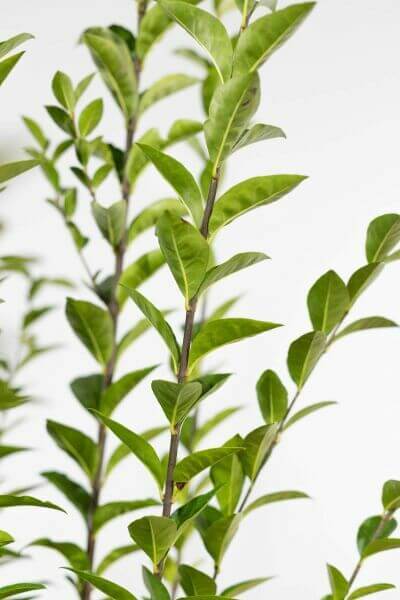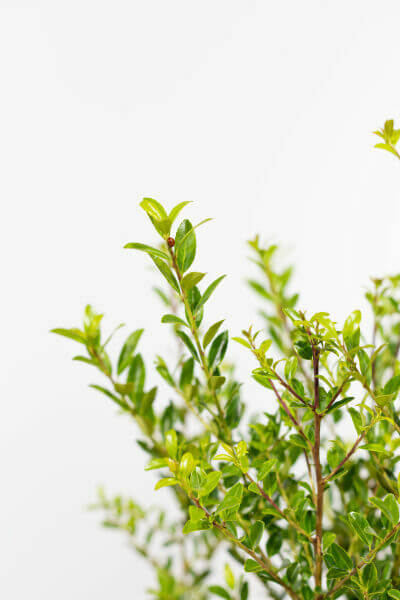Best Hedging Plants For Decorative Hedges
Best Hedging Plants For Decorative Hedges
Blog Article
Best Hedging Plants For Garden Privacy
Improve your garden's allure with lavish hedge varieties such as Yew (Taxus), Thuja, Laurel, Photinia, and Bamboo, commemorated for their structural integrity and ecological benefits.
Yew and Thuja offer evergreen coverage and winter season durability, while Laurel uses rapid growth and broad, aromatic leaves.
Photinia adds seasonal appeal with its lively red foliage, and Bamboo lends a low-maintenance, tranquil ambiance.
These hedges enhance air quality, reduce noise, and develop tranquil, personal spaces.
Appropriate planting, spacing, and upkeep ensure vigorous development and environmental consistency.
Check out how these lavish ranges can raise your garden's appeal and well-being.
Key Takeaways
Change Your Garden With Lush Hedge Varieties
- Select Yew for its thick, evergreen development and unrivaled durability.
- Go with Laurel for its fast growth and broad leaves, guaranteeing fast personal privacy.
- Pick Photinia for its lively seasonal foliage, which turns a striking dark red.
- Utilize Bamboo for a low-maintenance, winter-hardy hedge with aesthetic appeal.
- Space plants 2-3 per meter and prune routinely for ideal growth and health.
Popular Hedge Plants
When changing a garden with rich hedge ranges, it's necessary to think about popular hedge plants such as Yew, Thuja, Laurel, and Photinia due to their special attributes and advantages.
Yew (Taxus) is extremely respected for its longevity and dense, green growth, making it a prime choice for enduring landscapes.
Thuja is noted for its evergreen foliage and robust winter resilience.
Photinia adds seasonal vibrancy with red leaves that darken gradually, developing dynamic visual appeal.
Laurel offers fast development and aromatic, broad leaves, ideal for fast personal privacy.
In Addition, Bamboo is an excellent option for atmosphere, using a low-maintenance, winter-hardy alternative that enhances the garden's aesthetic with its elegant, swaying walking canes.
These selections cater to a range of horticultural requirements and preferences.
Advantages of Garden Hedges
Garden hedges offer a wide range of advantages, making them an important addition to any landscape. These natural barriers are cost-effective to execute and provide considerable wind defense, enhancing air flow and contributing to noise decrease. The dense foliage of hedges like Thuja and Beech guarantees privacy by blocking presence, producing a remote and peaceful environment.
Hedges likewise play a crucial function in microclimate regulation, supplying a stable environment that cultivates plant growth and minimizes temperature level fluctuations. Their detailed leaf structures filter contaminants, improving air quality and adding to a much healthier garden community.
Additionally, hedges excel in sound reduction, soaking up and deflecting sound waves to lower ambient sound levels. This double functionality of supplying both visual and acoustic personal privacy enhances the general harmony and aesthetic appeal of any garden.
Planting and Upkeep Tips
For an effective hedge, meticulous preparation of the planting location is vital. Ensure the soil has appropriate pH and drain to support strong root development.
Space the plants properly for the picked species. Water the hedge regularly during its preliminary development phase, adjusting as required with seasonal modifications.
Implement a methodical bug control and disease prevention technique, utilizing chemical or organic treatments when required. Routinely check for aphids, termites, and fungal infections.
Apply mulch to maintain moisture and suppress weeds. Seasonal pruning promotes dense growth and air flow, necessary for plant health.
Following these guidelines will assist you cultivate a vibrant, well-kept hedge that boosts the charm of your garden.
Spacing and Cutting Guidelines
Spacing and Cutting Standards
Appropriate spacing and trimming are vital for cultivating healthy, aesthetically appealing hedges. Sufficient spacing ensures each plant gets adequate nutrients, light, and airflow.
Follow these guidelines for optimal hedge upkeep:
- Spacing: Position hedge plants 2-3 plants per meter to motivate robust development.
- Pruning Strategies: Routine pruning is essential for keeping desired hedge height and shape. Trim new growth in summer and cut down older wood throughout winter season.
- Seasonal Care: Change cutting schedules and approaches according to seasonal requirements to guarantee plant health.
- Hedge Height: Routinely monitor and trim to maintain the desired hedge height and attain consistent looks.
Following these steps will ensure your hedge grows, boosting both the appeal and functionality of your garden.
Selecting the Right Hedge
Picking the Right Hedge
Choosing the proper hedge involves assessing factors such as fully grown height, foliage density, and ecological resilience. Effective hedge plant choice requires understanding each types' development characteristics and site-specific flexibility.
For instance, Yew get more info (Taxus) offers outstanding durability and thick growth, while Thuja is notable for its winter strength. In addition, considering maintenance requirements is essential; fast-growing species like Laurel or Privet need routine cutting, whereas low-maintenance alternatives like Bamboo or Ivy may be preferable for those seeking minimal upkeep.
Environmental elements such as soil type, light accessibility, and wetness conditions need to likewise assist the selection process. This careful technique makes sure the chosen hedges will flourish, offering both functional and aesthetic benefits to the garden landscape.
Shipment and Planting Advice
To guarantee your hedge plants grow, they need to be provided by specialized couriers and planted immediately upon arrival.
Follow these vital actions for effective planting:
- Soil Preparation: Enhance the soil with raw material to improve drain and nutrient content.
- Planting Depth: Develop a trench twice the width and equivalent to the depth of the root ball.
- Watering Methods: Water thoroughly after planting, keeping the soil consistently moist however not saturated.
- Mulching: Use a layer of mulch to retain moisture and suppress weeds.
Client Support and Service
Offered the important role of prompt help in horticultural pursuits, our consumer support team is offered 6 days a week through telephone, email, and social media to provide professional guidance and quickly address any concerns. Their dedication to fast reaction times guarantees customer fulfillment by fixing questions related to plant health, optimal planting methods, and maintenance schedules.

-------------------
This thorough support system, strengthened by a stellar 9.3/ 10 customer rating, highlights our commitment to boosting the gardening experience for every customer.
Frequently Asked Questions
How Long Does It Take for Hedge Plants to Develop?
Hedge plants normally need one to three years to end up being completely developed, with the exact duration varying by types and growing conditions.
Efficient care during this vital period is vital for robust development. Constant watering, vigilant weed control, and suitable fertilizer application are essential in promoting strong root development.
For instance, fast-growing species like Laurel might establish more rapidly, while slower-growing ranges such as Yew may take longer. Diligent maintenance speeds up the facility procedure, leading to dense and healthy hedges.
What Are the very best Hedge Plants for Privacy?
The question of the very best hedge plants for privacy includes assessing evergreen and deciduous alternatives.
Evergreen hedges like Thuja, Laurel, and Cypress offer year-round coverage, ensuring constant privacy.
On the other hand, deciduous hedges such as Beech provide seasonal privacy, shedding leaves in cooler months.
Key maintenance suggestions for personal privacy hedges consist of routine cutting, fertilizing in spring, and appropriate spacing-- generally 2 to 3 plants per meter.
Additionally, constant watering and diligent weed elimination are important for promoting healthy, thick development.
Can Hedge Plants Draw In Wildlife to My Garden?
Yes, hedge plants can attract wildlife to your garden by offering essential benefits like shelter, food, and nesting websites, therefore enhancing regional biodiversity. For example, yew, holly, and laurel are excellent for attracting birds, while ivy supports a variety of insects.
Nevertheless, it is very important to keep in mind that there are some drawbacks, such as increased maintenance to handle pests and routine maintenance. Thoroughly picking and maintaining hedge ranges can assist balance these advantages and drawbacks, ultimately promoting a vibrant and sustainable environment in your garden.
Are There Any Blooming Hedge Plants Available?
Yes, there are flowering hedge plants readily available that can improve the appeal of your garden.
For example, Elaeagnus, also called Olive Willow, produces fragrant white flowers in the fall, including a touch of sophistication.
Photinia, another popular choice, showcases dynamic red leaves that grow into an abundant green, creating a vibrant visual result throughout the seasons.
To ensure these plants prosper, it's important to practice proper pruning techniques and seasonal maintenance, such as cutting brand-new development in the summer season and cutting back in the winter.
These steps will help preserve the health and visual appeal of your blooming hedges.
How Do I Avoid Pests in My Hedge Plants?
To prevent pests in hedge plants, employ natural pest control methods and maintain appropriate hedge care. Introduce useful bugs like ladybugs, which take advantage of hazardous insects, to produce a well balanced community.
Routinely examine your hedges for signs of invasion and immediately get rid of any afflicted parts to prevent the spread. Guarantee the health of your hedges by applying balanced fertilizers and supplying appropriate water.
Make use of mulching to maintain soil moisture and proper spacing to lower plant tension and promote robust development. These practices collectively help in reducing pest issues and maintaining a healthy hedge.
Conclusion
In essence, choosing the right hedge ranges such as Yew, Thuja, and Laurel can change any garden into a peaceful sanctuary. These plants provide year-round greenery, improve aesthetic appeal, and offer useful advantages like noise reduction and wind defense.
Correct planting methods, accurate spacing, constant watering, and seasonal trimming are vital for optimum development.
Trustworthy shipment services and skilled consumer support guarantee a smooth experience from purchase to planting, making it easier than ever to raise your outdoor space.
Garden hedges provide a plethora of benefits, making them an important addition to any landscape. These natural barriers are cost-effective to implement and offer considerable wind defense, boosting air circulation and contributing to noise reduction. The thick foliage of hedges like Thuja and Beech ensures personal privacy by obstructing exposure, creating a secluded and tranquil environment.

Pruning Methods: Regular pruning is important for maintaining wanted hedge height and shape. Cut new development in summertime and cut back older wood during winter season.
Report this page